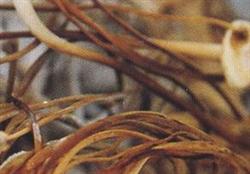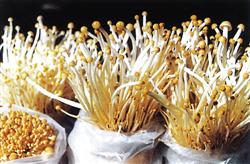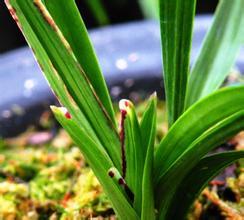Control of basal rot of Flammulina velutipes

In the growth and development stage of the symptomatic fruiting body, the base of the stalk became dark brown to black erosion, and after the basal erosion, the fruiting body lodged. Although the young mushroom cluster does not lodge, it can not continue to grow and develop upward. When it occurs seriously, the acicular young mushroom becomes black and eroded. Penicillium sp., the pathogen, belongs to the subphylum Trichoderma, Trichoderma, Coleoptera, Piliaceae. The pathogen, such as on potato sucrose medium, has white and powdered hyphae. The culture medium was dark reddish brown and the colony was pink. The peduncle grows from the aerial hyphae and bifurcates symmetrically. Similar to the branching of penicillin, but the conidia placed at the tip of the branchlet can form a long chain, which is up to 400 million microns long, and the conidia are oval, single-celled and colorless. It occurs everywhere, and most of them are planted in indoor beds. It mostly occurs on the mushroom bed of cottonseed shell raw material cultivation, the water content of the culture material in the growth stage is too high, there is stagnant water on the bed for a long time, and the film is covered for a long time, poor ventilation and excessive wet crossing, which is favorable for occurrence. Prevention and treatment 1. It is very important to control the appropriate water content in the fruiting body growth stage and often eliminate the stagnant water on the bed surface, especially in the fruiting growth stage. 2. After discovering the diseased mushroom, it should be eliminated in time, and then spray 1 ∶ 500 times 25% carbendazim or 65% Dysen zinc, which can get a certain control effect.
- Prev

Chemical control of long spot disease of Flammulina velutipes
The disease is caused by Pseudomonas aeruginosa and is mainly infected with Flammulina velutipes lid, which is needle-shaped at the beginning, and then expands to the size of sesame grains. Although the edges are irregular, the disease spots can be combined with each other to form irregular rust spots. Control methods: in order to prevent the occurrence of rust spot, do not sprinkle directly to the fruiting body when sprinkling water on the mushroom room.
- Next

Flower fertilization
The rational disease of orchid peanut, also known as non-infectious disease, is caused by unsuitable cultivation environment and maintenance measures other than pathogens. Such as the temperature is too high and too low, the light is too strong and too weak, water and fertilizer imbalance, lack of elements, improper use of drugs, harmful gases in the air, toxic substances on the ground pollution and so on. Orchids are common.
Related
- Fuxing push coffee new agricultural production and marketing class: lack of small-scale processing plants
- Jujube rice field leisure farm deep ploughing Yilan for five years to create a space for organic food and play
- Nongyu Farm-A trial of organic papaya for brave women with advanced technology
- Four points for attention in the prevention and control of diseases and insect pests of edible fungi
- How to add nutrient solution to Edible Fungi
- Is there any good way to control edible fungus mites?
- Open Inoculation Technology of Edible Fungi
- Is there any clever way to use fertilizer for edible fungus in winter?
- What agents are used to kill the pathogens of edible fungi in the mushroom shed?
- Rapid drying of Edible Fungi

